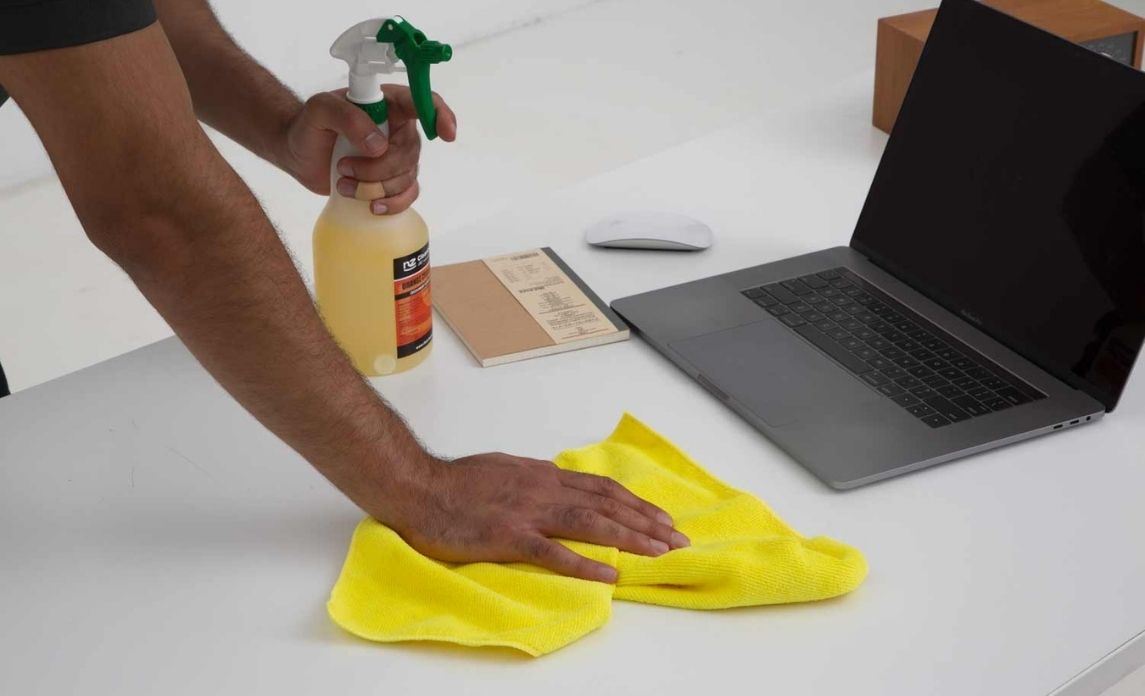What happens after you clean? Your entire space will be immaculate, of course! Beyond a sparkling clean area, however, what happens to the things you used to do the cleaning? It’s not a good idea to just leave them dirty—that’s a recipe for contamination and other unwanted, unhealthy consequences.
The secret to a clean space is to not only invest in quality cleaning items. You should also keep these cleaning items in good shape and replace them when necessary. Here’s a guide to help you determine when to clean and replace your chosen cleaning tools.
Mops
When to wash or clean:
Mops should be washed after every use, especially when they were used to clean up extra sticky, grimy messes. Make sure to use the appropriate detergent based on the material of the mop head. After a thorough rinse, make sure the mop head is completely dry before storage. Air drying is ideal to preserve the quality of the cloth or fibres. Finally, store the mop in a dry place with the mop head up.
When to replace:
Cotton mop heads are designed to last for as long as 50 washes, fewer if you mop more often or have a larger floor area. Microfibre mop heads have a longer lifespan—up to 400 washes or more—as long as you take care of them properly. In general, however, you should replace mop heads when you see obvious signs of wear and tear. For example, for string-head mops, you might notice that the strands are thinner or are beginning to fall off. The fibres may also start to “shed” when they reach a certain age. For microfibre mops, there may be bald spots on the surface and the individual fibres may start to look thinner and feel rough.
Microfibre cloths
When to wash or clean:
Microfibre cleaning cloths are amazing cleaning tools. You can use them on their own or with a little bit of hot water to wipe off spills, get dust off tables and shelves, and disinfect surfaces. They’re so absorbent that they can hold up to seven times their own weight in water. Moreover, the structure of the fibres ensures that the cloth actually picks up and hold on to the dirt instead of just pushing dust around. What’s great about microfibre cloths is that they’re extremely durable and has a quick drying time. Therefore, you can wash them after every use and they’ll be ready again after a few hours.
When to replace:
You can use microfibre cloths for years without replacing them as long as you take care of them properly. Some important care instructions include the following:
- Detergent isn’t necessary for washing but uses liquid detergent, not powder detergent if you must;
- Don’t use bleach, fabric softeners, or hot water; and
- Don’t wash them with other fabrics to prevent lint from getting caught in the fibres.
You can easily determine that your microfibre cleaning cloths are due for replacement when the fibres appear thinner and feel scratchy.
Dishcloths and washcloths
When to wash or clean:
Your dish-drying cloth can be used multiple times before washing. Just make sure that you use it ONLY for drying dishes; dedicate a separate towel for drying your hands. As long as you let them air dry properly after using, you can use the same cloth to dry dishes for about five days. Give it a sniff every so often. If it starts to smell a little musty or damp even if it’s dry, it’s time to give it a wash. Meanwhile, any cloth used for high-risk spills from raw meat, fish, and the like should be washed immediately. Use hot water for washing and make sure to add bleach. For extra-clean cloths, boil them for 10 to 15 minutes before washing as usual.
When to replace:
A good indicator that you already need to replace your dishcloths is when they have already lost their absorbency. Thin, ragged cloths that rip easily should also be retired and replaced with new, sturdier ones.
Dish sponges and brushes
When to wash or clean:
It’s best to disinfect dish brushes and sponges after using them to prevent contamination. For sponges, you can simply throw them in the dishwasher. You may also soak them in a solution of hot water and detergent for a couple of minutes, then rinse thoroughly. “Nuking” a wet, non-steel sponge in the microwave for 2 to 3 minutes will also do the job. Just make sure that the sponge is free from any traces of soap.
Dish and kitchen brushes can also benefit from a quick trip into the dishwasher. The hot water and detergent solution also works perfectly. Be sure to inspect the bristles if there are any bits of food stuck between them. After washing, make sure to rinse thoroughly and hang to dry. Like mops, store brushes bristle side up.
When to replace:
Dish sponges and brushes should be replaced once they start falling apart. This could be as early as three to four weeks or much later, depending on the amount of work you do.
Toilet brushes
When to wash or clean:
Toilet brushes should be washed after each use. Mix a few drops of liquid detergent and bleach with boiling water and soak the head for about 30 minutes. Make sure that there are no debris stuck to the bristles. Wear gloves and rub the bristles to let the soapy water and bleach really get into every nook and cranny. If your toilet brush has a holder, you should also scrub it with hot water and soap. Once done with washing, rinse the brush and holder with hot water, let dry completely, and store. If your toilet brush doesn’t have a holder, store it bristle side up.
When to replace:
When the bristles start falling off or are already worn down, it’s a good time to replace your toilet brush.
Brooms and floor brushes
When to wash or clean:
If you’re using brooms or floor brushes to sweep away dirt, check for hairs and other debris that got stuck in the bristles after every use. Most modern brooms now come with “combs” to detangle the bristles and remove any unwanted bits clinging to the strands. Use them to your advantage. Depending on how often you sweep the floor and the amount of dirt, you can deep clean the broom head every one or two months. You can use the same technique in washing toilet brushes. However, brooms made from natural fibres don’t need the same kind of deep cleaning. Just make sure that there are no particles that are stuck between the hairs.
When to replace:
Like toilet brushes and mops, you should replace brooms when the bristles or strands are already worn down. Consider replacing a broom or floor brush as well when there are noticeable gaps between the bristles; the bigger the gaps, the less effective the broom will be at sweeping.
A clean commercial space is a safe and healthy place. Knowing how often should you clean or replace and ensuring that your cleaning items are in good shape goes a long way at keeping everything spic and span.
Sources:
- https://www.northstarmatservice.com/blog-article/how-often-should-mops-be-replaced/
- https://www.hgtv.com/design/design-blog/clean-and-organize/how-often-should-you-clean-or-replace-cleaning-products
- http://home.bt.com/lifestyle/house-home/how-often-should-you-clean-your-household-cleaning-tools-find-out-11364011678408


